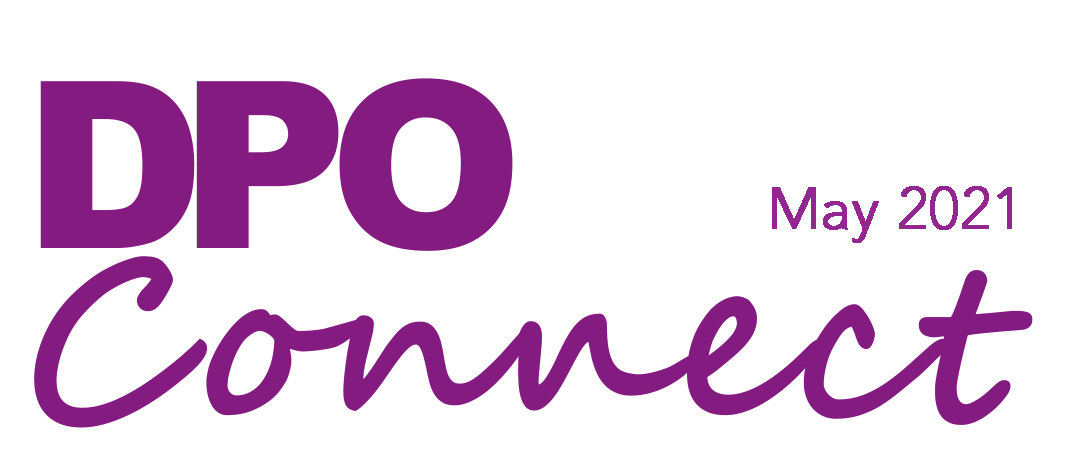Embrace AI and automation to put accountability at the heart of your data protection programme
Article contributed by Dathena
In today’s business world, it is no longer enough to take a narrow “checkbox” approach to compliance with digital privacy and data protection regulations. Instead, organisations need to take a broader view of their role as stewards of consumers’ personal data and seek not just to abide by specific rules, but to actively earn users’ trust by demonstrating true accountability in all aspects of their data management practices.
That principle is at the heart of the Personal Data Protection Act (PDPA), which requires all organisations to demonstrate accountability by meeting certain fundamental requirements. Under the PDPA, organisations are required to:
- Develop and implement clear, consistent policies for data protection;
- Communicate with and inform their staff about these policies; and
- Put rigorous processes in place to ensure they meet their obligations under the PDPA.
Organisations are also required to be proactive about translating legal requirements into actionable internal policies and practices, creating a culture of responsible data management, and communicating transparently with consumers about their data protection practices.
Developing and implementing rigorous policies and practices to drive accountability and safe data handling across an entire organisation can be a challenge. Organisations are currently dealing with an explosion of data, and the new era of remote work and the shift to the cloud have significantly expanded and complicated the ways in which personal data is handled.
A new approach to data protection
Relying on your Data Protection Officer (DPO) and team of data protection staff to manually sort through, classify, and monitor data may not be effective to deliver the speed or scalability needed to ensure true accountability. What is needed is a force multiplier capable of dramatically expanding your organisation’s ability to handle data securely and responsibly, without a corresponding increase in expense or effort on the part of your IT and data protection teams.

Fortunately, a new wave of technological advances, including groundbreaking innovations in the automation, AI, and machine learning spaces, are now enabling organisations to address their data protection obligations with unprecedented efficiency and effectiveness. Such technologies can also help organisations to implement and rigorously enforce best practices, such as those recently identified by the Personal Data Protection Commission (PDPC) in the handbook “How to Guard Against Common Types of Data Breaches”, helping to protect organisations and their customers from costly data breaches.
In this article, you will learn how new technologies can help organisations to institute effective strategies for PDPA compliance, and go beyond checkbox-style compliance to deliver rigorous and scalable strategies for earning consumers’ trust, respecting their privacy, and keeping their data safe at scale.
Identifying and Assessing Data Risks
The first step toward an accountable data protection management strategy is to identify sensitive data effectively and assess the corresponding risks. Without visibility into the way that data is being collected, stored, shared, and used, it is impossible to ensure that the data is being kept safe and handled responsibly across your organisation’s entire ecosystem.
As discussed in the PDPC’s Guide to Developing a Data Protection Management Programme, monitoring risk effectively requires the establishment of internal structures and processes that can identify security gaps, flag areas for improvement, and rapidly generate appropriate remedies.
This requires a clear high-level understanding of the lifecycle of personal data within your organisation, and the ability to understand and document the ways in which data flows through your organisation. It also requires a more granular understanding of the ways in which data is catalogued and stored: configuration issues such as folder permission settings, access control mishaps, and unsecured settings can all result in the unintended disclosure of personal data, so it’s vital to pay attention to detail when monitoring and identifying risks.
How Technology Helps
AI tools can rapidly analyse an organisation’s data ecosystem to classify personal data and monitor who is using it, how it is being used, and whether additional steps are needed to deliver secure and accountable data management. At their best, such tools can deliver a 100X increase1 in security operations productivity, and give organisations full visibility into their data management risk exposure in as little as 48 hours2 from time of deployment.
Such tools can:
- Automatically map users based on access to sensitive data, allowing organisations to identify employees that access or handle highly sensitive business data — from financial information to customer databases — and ensure that it is not inadvertently shared online or made accessible via the cloud.
- Locate folders with high amounts of sensitive files, enabling organisations to put policies and procedures in place to ensure that sensitive data or personal information is not inadvertently shared, leaked, or stored in an unsecured way.
- Identify users’ groups that have access to sensitive files, ensuring that files are not improperly shared between groups and enabling organisations to tailor training and target oversight to the specific business units that need it most.
Enforcing Policies and Preventing Data Loss to Secure your Data
Personal data protection is the responsibility of every employee — but you cannot expect your employees to keep data safe unless they are fully aware of your data protection policies and how those translate into specific processes and workflows. Designing and enforcing suitable policies, and educating team members clearly and consistently about their role in keeping sensitive data secure should be a key part of every organisation’s data management strategy.

Beyond simply educating and enforcing policies, however, organisations also need to ensure that they proactively work to protect employees from accidental lapses or malicious attacks. During the era of remote work, unsupervised employees can all too easily visit unsuitable websites, click on suspicious links, download unvetted files, or fall prey to phishing and social-engineering attacks designed to trick them into downloading malware or revealing their login credentials or other sensitive information.
How Technology Helps
There is no way to forge data policies that will protect your team completely from cyberattacks or data breaches. This means organisations need to assume that data breaches are all but inevitable, and proactively design their data systems to limit the damage when such breaches occur.
Protection should be prioritised for data that is most at risk, such as files or documents that contain high amounts of personally identifiable information or business-critical data. This, coupled with proper training and educating of employees, creates a holistic protection framework safeguarding your organisation from data leaks and breaches. Through the use of technology, protection policies can be generated to effectively complement and augment organisations’ existing Data Loss Prevention and Cloud Access Security Broker tools.
Using such tools, organisations can:
- Automatically identify and classify your organisation’s files as sensitive or non-sensitive with no room for human error.
- Automatically generate and enforce data protection policies by ensuring that policies are customised to the specific risks associated with any given piece of data, and ensuring that especially valuable or sensitive data remains subject to stringent security processes, and is not inadvertently shared or exposed.
Monitoring and Controlling Access to Sensitive Data
It is important for organisations to put in place measures that allow them to spot and respond rapidly to any potential data breach. Monitoring should be done by regular management oversight and by using monitoring tools, which help to provide early detection and warning to organisations.
Time is of the essence when it comes to plugging data leakage and safeguarding personal information in the wake of a breach, so organisations need tools that are aggressive enough to identify and halt ongoing attacks or breaches — while still giving internal teams and end-users the flexibility they need to do their jobs or use the organisation’s products and services.
How Technology Helps
The use of automated tools can increase effectiveness and efficiency during monitoring and incident response. Enable collaboration and protect sensitive files by having full visibility and a centralised control on file sharing activity. The result: DPOs no longer have to manually track access to sensitive files by people within and outside of the organisation and they are enabled to relinquish any unauthorised access immediately.
Using such tools, organisations can:
- Automatically analyse all shared files at up to 10,000 times3 the speed of manual analysis to ensure that any file shared with third parties via collaborative tools or cloud platforms are checked for sensitive data before they are uploaded or distributed.
- Understand what has been shared by generating real-time reports with insights on sharing dates, external access by public and business users, amount of personal data, and risk level of files.
- Control what is being shared by immediately revoking access to sensitive files by unauthorised third-party users, receiving real-time alerts on anomalous behaviour by any network users, and preemptively identifying instances where users gain access to large amounts of personal data.
Empowering DPOs in Their Roles
During the global pandemic, data protection officers (DPOs) and corporate data protection teams have been faced with unprecedented challenges. The rapid shift to remote work has forced organisations to give distributed workers remote access to data of all kinds, even as organisations have been left with less visibility into or control over the activities of employees working from their couches rather than their cubicles.
The PDPC puts the DPO firmly at the centre of developing accountable and reliable data protection policies, with responsibility for everything from ensuring compliance to handling consumer complaints — all while also guiding and advising the CEO and other top decision makers on data strategy.
Understandably, that is proving challenging for DPOs. One recent study found that nine out of 10 C-level security execs4 are stressed out to the point of suffering mental or physical illness. With many organisations seeking to cut costs, there’s a risk that DPOs will be asked to do more and more with less resources, making it nearly impossible for them to play the strategically vital role envisioned by the PDPC.
How Technology Helps
To foster real accountability, DPOs need to drive policymaking and strategic planning. That cannot happen if they are constantly rushing to put out fires and manually manage the complex process of ensuring data protection. Automation and machine learning allows DPOs to step off the treadmill by implementing scalable, tech-forward solutions. Smarter tech can:
- Automate key processes such as data classification to minimise manual steps, enabling data to be processed and validated up to 10,000 times faster, and simultaneously sharply reduce the potential for costly human error.
- Provide full visibility into all aspects of organisational activities related to personal data protection, enabling DPOs to easily verify that policies are being adhered to and to identify business units, teams, or individuals who need more support.
- Deliver a centralised command hub to help translate policies into action, and allow DPOs to communicate clearly, ensure consistency, and enforce processes and policies across the entire organisation.
Conclusion
In the digital-first era, organisations need to go beyond merely ticking off specific regulatory requirements, and approach data protection with a real commitment to doing what is right for their customers. That kind of accountability requires human insight and careful attention to detail — and delivering that kind of painstaking attention at scale is a critical challenge for today’s organisations.

To rise to the challenge, organisations need to stop trying to manage their data manually, and start seeking out new technologies that can deliver reliable and scalable data management. With AI tools themselves increasingly subject to regulation designed to ensure accountability, a new wave of machine learning and automation-focused innovation is equipping organisations to drive true accountability in all aspects of their data management.
By using accountable and responsibly maintained AI tools to automate time-consuming tasks such as classifying and monitoring data, DPOs can focus their energies on other critical challenges — including setting and enforcing the policies that will ensure safe data handling across their organisation, and help forge a true culture of trust and accountability when it comes to handling personal information.
1 https://www.dathena.io/solutions/data-and-user-risk-assessment
2 https://www.dathena.io/post/remote-work-is-a-risky-business-how-dathena-helps-you-identify-and-assess-risks-in-the-wfh-era
3 https://www.dathena.io/post/how-dathena-monitors-and-restricts-file-sharing-for-the-modern-workplace
4 https://www.scmagazine.com/perspectives/can-cisos-learn-to-do-more-with-less/


